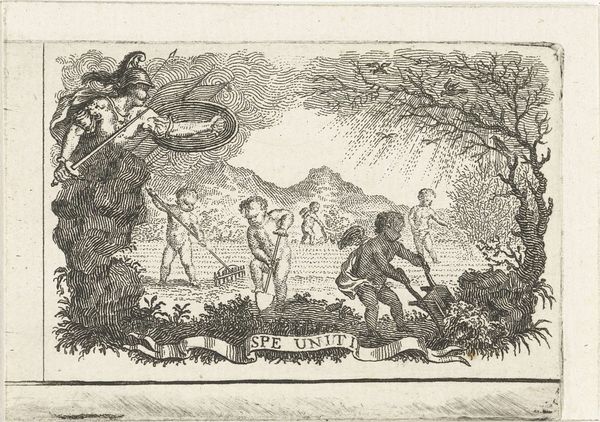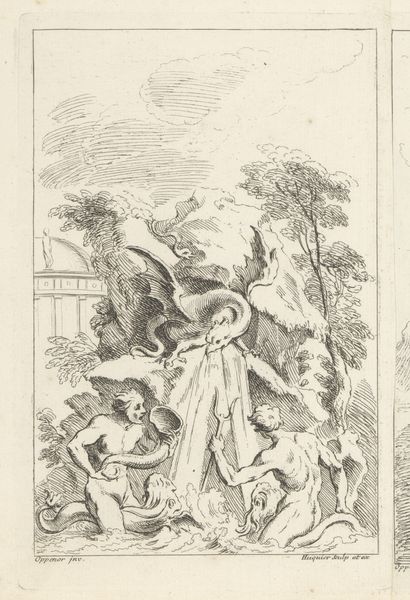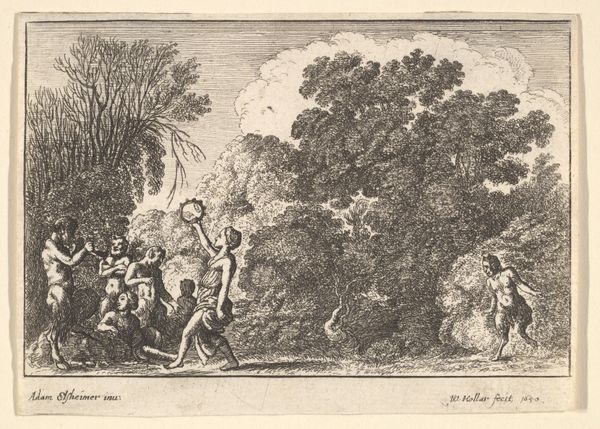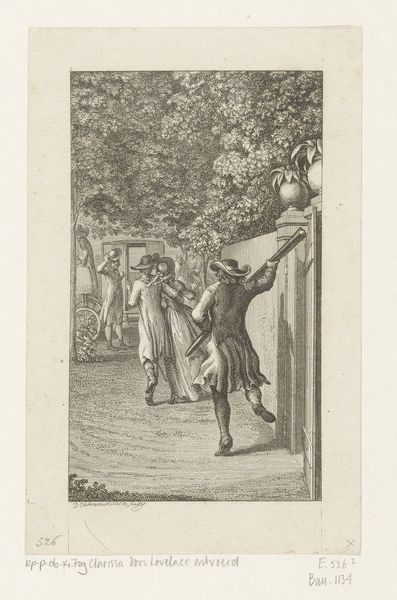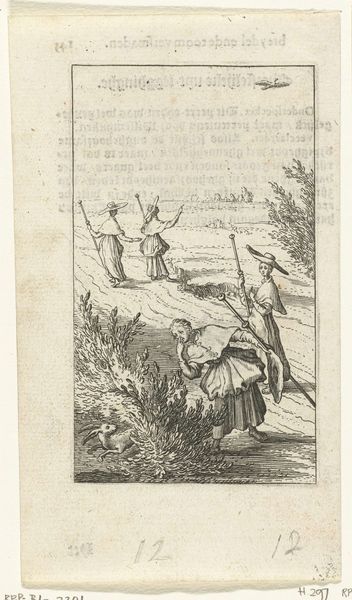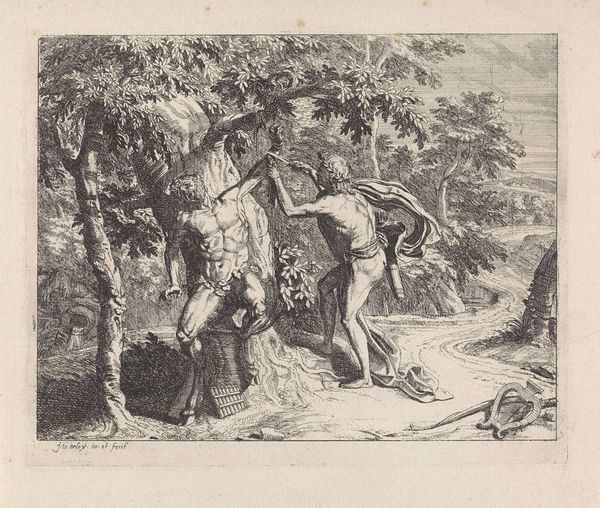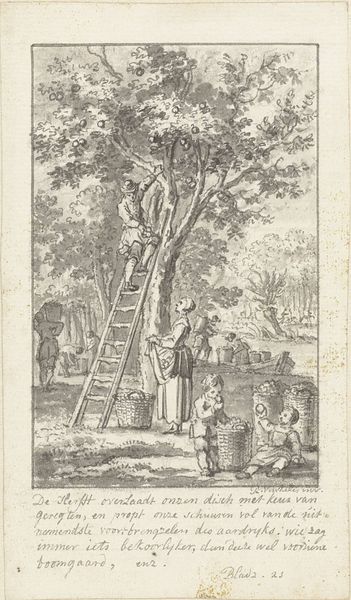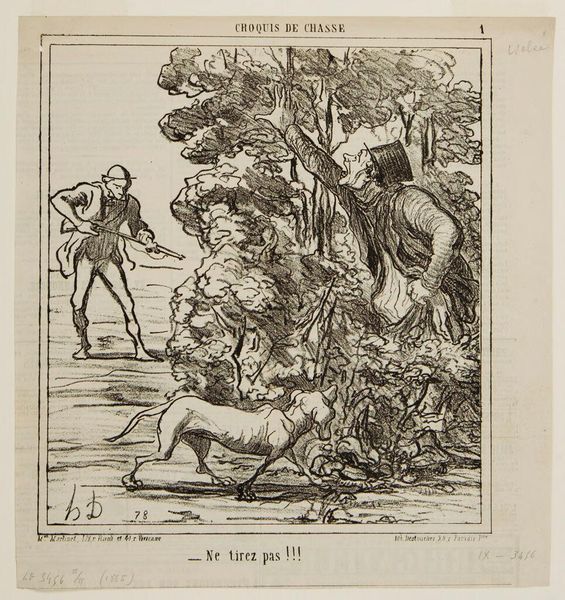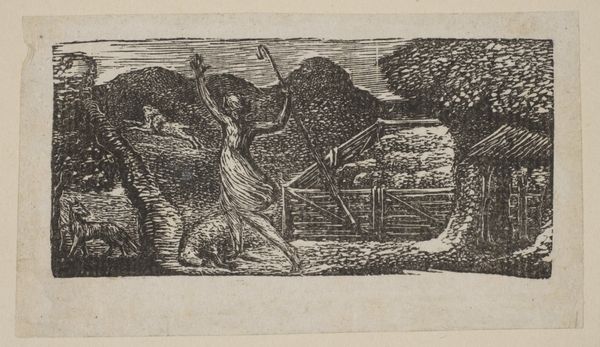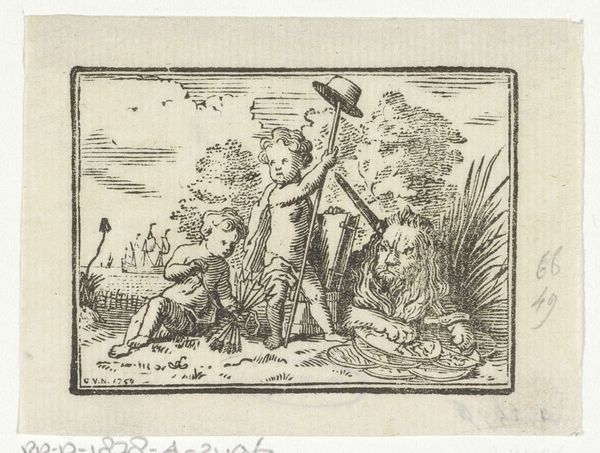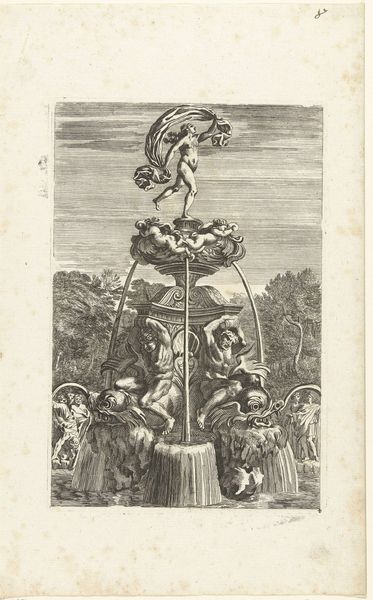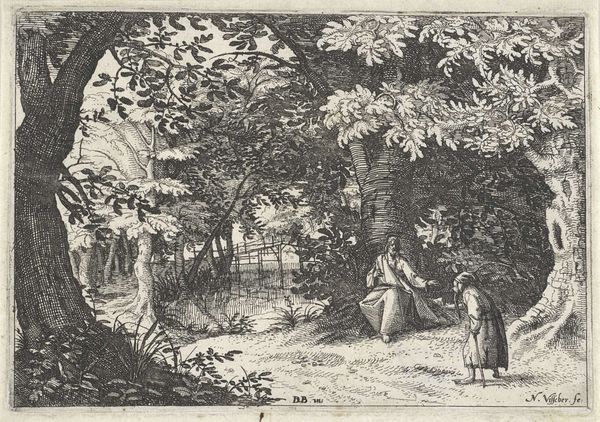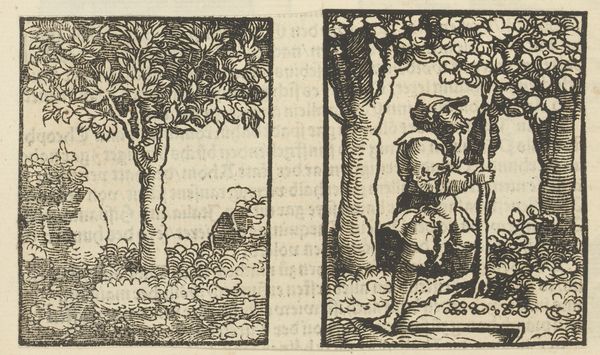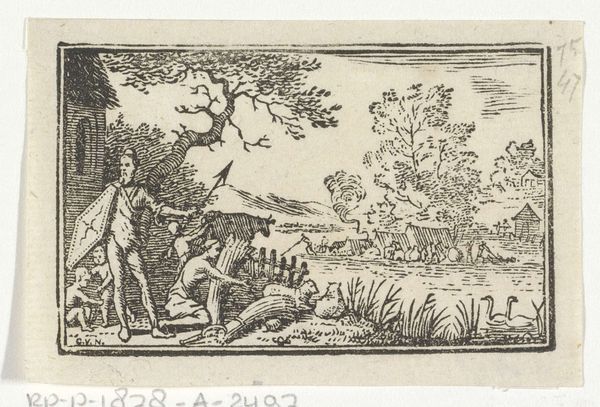
drawing, lithograph, print, pen
#
drawing
#
lithograph
# print
#
pen sketch
#
figuration
#
romanticism
#
pen
#
cityscape
#
genre-painting
Copyright: National Gallery of Art: CC0 1.0
Curator: This is Honoré Daumier's lithograph from the 19th century, "Mais on jouit d'une félicité pure." It's part of a larger commentary on French society, particularly its bourgeoisie. Editor: It's intriguing. The stark contrast and dynamic line work immediately convey a sense of precariousness, almost as if the scene could topple at any moment. Curator: Exactly! Daumier was a master of social satire. This piece, whose title roughly translates to "One enjoys pure bliss..." is rife with irony, given what's depicted. Consider the context: post-revolution France, the rise of a wealthy merchant class. Daumier consistently lampooned their aspirations. Editor: So the ladder becomes a visual metaphor then, right? For upward mobility, or perhaps the unsteady footing of this new social order. I notice how Daumier uses the pen to create a density of lines in the figures below, making them feel like a compressed, agitated mass. Curator: Precisely. The figures underneath reaching for the apples embody the acquisitive desires of the middle class, seemingly oblivious to the potential danger, their “pure bliss” a mere illusion. Daumier often utilized caricature to highlight the flaws and follies of the time. Editor: There’s a certain grotesqueness to their upward gaze, wouldn’t you say? I mean look at the over exaggerated features in those figures staring into the tree, there’s this wonderful dance in line variation. Curator: A distortion meant to reflect their distorted values. And Daumier had a real talent to expose those societal contradictions through visual cues. Here he highlights the widening disparity between the upper and lower echelons during the second Industrial Revolution. Editor: Visually, I'm drawn to the stark division between the light and dark areas. That sharp contrast intensifies the emotional impact, turning a simple genre scene into a commentary. And those loose sketch marks on the right are great. Curator: It allows for interpretation, creating a critical lens for how we view that era. Daumier isn't simply depicting a scene, he's inviting us to question it, even to challenge the very notion of "pure bliss" within a society built on unequal access and precarious livelihoods. Editor: It makes me think about contemporary art as activism today, and the different mediums it's delivered through, so relevant in its political message. Curator: Absolutely. Daumier's incisive wit, combined with his mastery of lithography, leaves us much to consider.
Comments
No comments
Be the first to comment and join the conversation on the ultimate creative platform.
